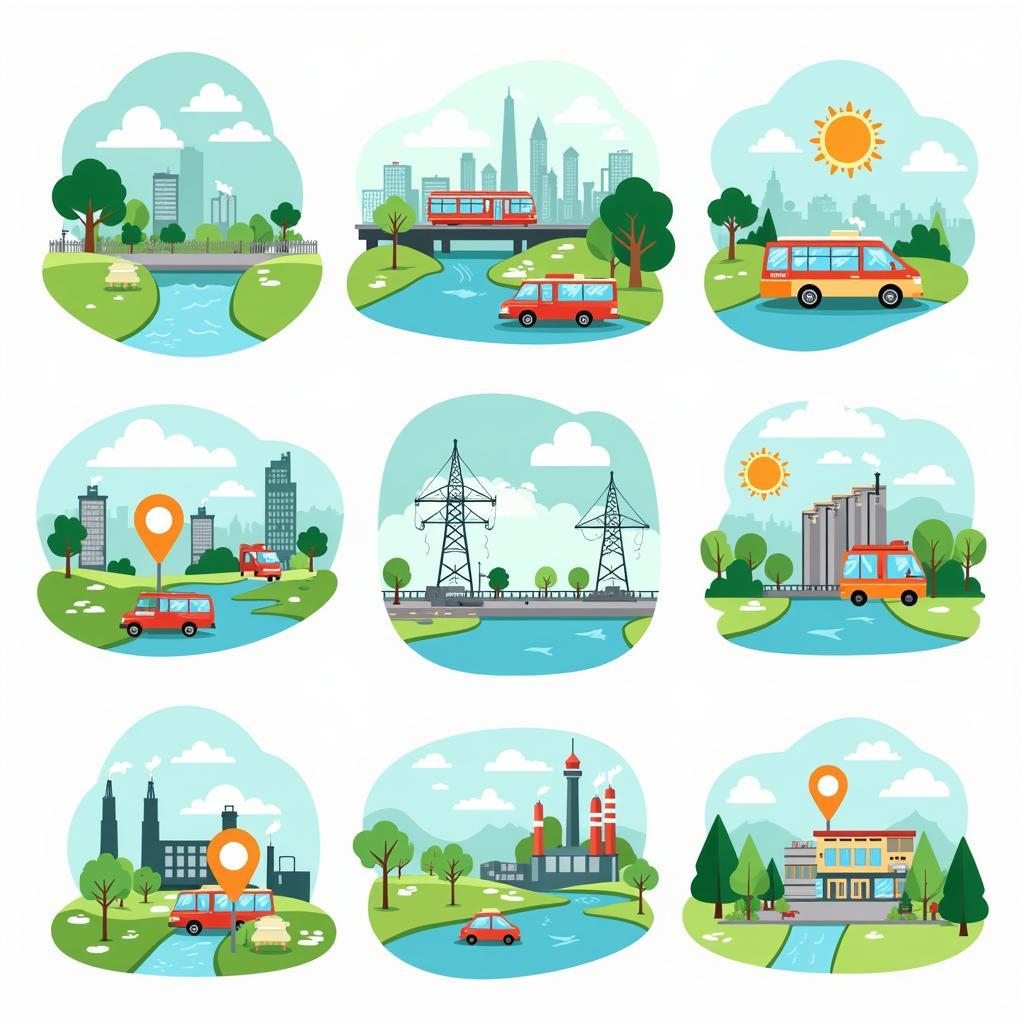Air pollution is a growing concern worldwide, and Southeast Asia, with its rapidly developing economies and urban centers, is no exception. Understanding the air pollution index (API) in ASEAN is crucial for residents, travelers, and businesses alike. This article delves into the intricacies of air pollution indexes across the ASEAN region, providing valuable insights into the current situation, its implications, and what you can do to protect yourself and contribute to a cleaner environment.
Air quality varies significantly across ASEAN member states. Factors such as industrial emissions, vehicular traffic, seasonal agricultural practices (like burning biomass), and transboundary haze contribute to these fluctuating levels. Monitoring and understanding these fluctuations is essential for public health and sustainable development. For accurate and up-to-date data on air quality across the region, you can refer to our asean air quality data.
Decoding the Air Pollution Index
What exactly does the air pollution index represent? The API is a standardized measure of air quality, typically calculated based on the concentrations of several key pollutants, including particulate matter (PM2.5 and PM10), ozone (O3), sulfur dioxide (SO2), nitrogen dioxide (NO2), and carbon monoxide (CO). Different countries within ASEAN may have slight variations in their API calculation methods and reporting scales. However, the underlying principle remains the same: to provide a readily understandable indication of how polluted the air is at a given time and location. A higher API value indicates poorer air quality.
Why is understanding the ASEAN Air Pollution Index important?
Knowing the air pollution index allows individuals to make informed decisions about their activities, particularly those spent outdoors. It’s especially important for vulnerable populations such as children, the elderly, and those with respiratory conditions. Businesses can also use the API to optimize operations and minimize their environmental impact. asean air quality index provides further information on this topic.
Air Pollution Index Across ASEAN: A Closer Look
Each ASEAN nation faces unique challenges related to air quality. Some countries struggle with industrial pollution concentrated in urban areas, while others are more affected by seasonal agricultural practices. Understanding these nuances is key to developing targeted solutions.
What are the main sources of air pollution in ASEAN countries?
The primary sources vary, but often include industrial emissions, traffic congestion, and agricultural burning. Transboundary haze, a recurring issue in the region, adds another layer of complexity.
 Reducing Air Pollution in ASEAN
Reducing Air Pollution in ASEAN
Taking Action: Improving Air Quality in ASEAN
Combating air pollution requires a multi-faceted approach involving government regulations, technological innovations, and individual actions. From promoting sustainable transportation to investing in renewable energy sources, several strategies are being implemented across the region.
How can individuals contribute to reducing air pollution?
Simple changes in our daily routines can make a difference. Opting for public transport, cycling, or walking whenever possible can reduce vehicular emissions. Conserving energy at home and being mindful of our consumption habits can also contribute to a cleaner environment.
“Air pollution is a shared challenge that requires collective action,” says Dr. Anya Sharma, an environmental health specialist based in Kuala Lumpur. “Every individual has a role to play in creating a healthier and more sustainable future for ASEAN.”
“The key to effectively tackling air pollution lies in regional cooperation and data sharing,” adds Professor Lee Wei Ming, an atmospheric scientist from Singapore. “By working together, ASEAN nations can develop more effective strategies for mitigating the impacts of air pollution.”
“We need to empower local communities with the knowledge and resources they need to monitor air quality and advocate for change,” says Khun Somchai, a community leader in Chiang Mai, Thailand.
Conclusion
Understanding the air pollution index in ASEAN is crucial for protecting public health and fostering sustainable development. By staying informed, making conscious choices, and advocating for change, we can all contribute to a cleaner, healthier future for the region. The air pollution index (API) offers a valuable tool for understanding and addressing this critical issue.
FAQ
- What is the air pollution index (API)?
- How is the API calculated in ASEAN countries?
- What are the health effects of poor air quality?
- What are the main sources of air pollution in Southeast Asia?
- How can I check the current air quality in my city?
- What can I do to reduce my contribution to air pollution?
- What are ASEAN countries doing to address air pollution?
Need support? Contact us 24/7:
Phone: 0369020373
Email: aseanmediadirectory@gmail.com
Address: Thon Ngoc Lien, Hiep Hoa, Bac Giang, Vietnam.

